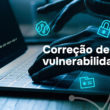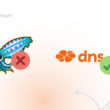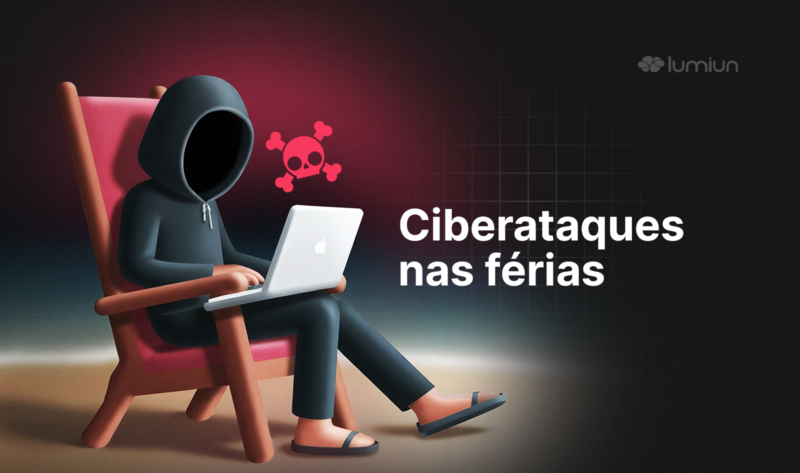During the vacation, many companies often reduce their operations, which may end up generating a false sense of security. Reduction of operations and attention creates a favorable environment for cybercriminals, which take advantage of the lowest surveillance to intensify their activities. However, they see at these occasions an opportunity to intensify their activities, knowing that the monitoring teams are reduced or less carefully.
Cybersecurity and Infrastructure Security Agency (CISA) encourages users to be aware of possible blows during parties and holidays. It is precisely at this stage that companies need to stay more vigilant. Team reduction and increased remote work favor the exploitation of invading vulnerabilities. Lack of preparation and attention quickly compromises a company's cyber security.
In this sense, maintaining robust security is important to protect business data, the most valuable assets and the main targets of cyber attacks. Committed data can lead to financial losses and irreparable damage to customer image and trust.
In this article, we will explore the main risks faced by companies during the holidays , as well as suggest proactive measures to prevent attacks . It is important to remember that digital security does not take off , and ensuring continuity of operations is important to preserve business assets and customer confidence.
Why are holidays a critical period for cyber attacks?
The holiday period has several factors that increase the vulnerability of organizations . First, one of the main reasons is the reduction of teams on corporate systems. In addition, with reduced monitoring, threats can go unnoticed , allowing invaders to exploit breaches that could be quickly identified under usual conditions.
Another factor that makes holidays a more conducive moment for cyber attacks is, moreover, the use of personal devices by employees. Many employees take advantage of the period to work remotely, accessing systems from personal networks and devices, which often do not have the same level of business networks safety.
In addition, increasing online transactions during vacation phishing and fraud attacks Salesforce data , consumers disbursed approximately $ 1.2 trillion in online purchases, which represents a 3% growth compared to the previous year. This increase reflects the change in consumer habits, with more people opting for the internet to make their purchases.
Cybercriminals take advantage of the high volume of financial activities to mask their shares, sending fraudulent emails directed to both consumers and company employees .
The vulnerability of companies during vacation
During the holiday period, cybercriminals intensify their malicious activities , taking advantage of the vulnerabilities present in the companies and devices of the companies . As we said earlier, with reduced teams, systems are more vulnerable and there is less continuous monitoring. Consequently, this scenario offers opportunities for attacks such as ransomware , phishing and other digital threats.
86% of ransomware victims were attacked on weekends or holidays, when defenses are weaker, according to Semperis . This data shows how criminals take advantage of safety failures and reduce monitoring during these times.
In addition to the statistics, there are real cases of companies that suffered devastating attacks during the holiday period, resulting in substantial financial losses and damage to their reputation . For example, Target , one of the largest retail networks in the United States, suffered a cyber attack from November 27 to December 15, 2013, which resulted in data theft of more than 40 million credit cards. Initial investigations revealed that an air-conditioned maintenance service provider used remote access, enabling the attack.
These attacks show that criminals choose strategic dates when companies are less prepared for incidents. Thus, they exploit the vulnerabilities generated by the reduction of teams and the lack of continuous monitoring.
For this reason, it is important for companies to prepare to deal with these attacks, even during the period of lower activity. Relying on a contingency plan , keeping defenses up to date , and ensuring continuous surveillance are fundamental practices to avoid these problems and the irreparable damage they cause.
Reduced teams and lack of monitoring
During their holidays, many companies end up operating with reduced teams , directly impacting monitoring and response to cyber threats . Consequently, the lower availability of IT and safety personnel limits surveillance and creates vulnerability that attackers can explore.
Team reduction is one of the factors that cybercriminals use to launch more sophisticated attacks , which are often not detected quickly. As a result, the most prolonged response time may result in further damage to the infrastructure , increasing inactivity time and causing even longer damage.
The lack of proactive monitoring during these periods is another very critical issue. Also, without the people needed to review security logs , conduct traffic analysis and investigate security alerts , many signs of invasion are ignored or delayed, allowing hackers to stay in networks longer.
In this sense, even if the team operates with fewer employees, it is necessary that the system monitoring is not neglected . Similarly, automated monitoring and alert disturbances , along with an incident response plan , can help mitigate risks during vacation and ensure continuity of cyber security .
Use of insecure personal devices
Using personal devices by employees during the holidays can pose a great risk to the company's cyber security. Without the security controls applied to personal devices, corporate information can be compromised, especially if employees access non -secure networks or use unprotected devices . Therefore, it is essential that companies adopt strict security policies to mitigate these risks.
Often, these personal devices do not have safety or antivirus , facilitating access to unauthorized users . In addition, domestic and public networks used to access corporate systems can be vulnerable to data interception by putting company information at risk.
In addition, it is important to mention the process of remote access to corporate systems through non -monitored systems, which is a great vulnerability. Consequently, the absence of clear safety policies for remote work , such as the mandatory use of VPN and multifactorial authentication , makes employees expose the corporate network to cybercriminals that exploit these flaws.
For this reason, it is essential that companies adopt strict security policies for the use of personal devices, such as providing security software and clear guidance on access to corporate systems . Thus, it is possible to combat the risks and protect company information, even during the performance of remote work .
Increased digital transactions and false promotions
Another very important factor to mention is the significant increase in digital transactions that happen during the holidays. This increase in volume of transactions creates a favorable scenario for phishing fraud and attacks , as many consumers and companies are focused on offers and promotions and can leave security in the background. In addition, since October, scammers have created more than 1,000 fraudulent pages, according to a survey of Redbelt Security cybersecurity consultancy.
Cybercriminals often take advantage of this sudden increase in online activities to launch more massive attacks, using fraudulent means and legitimate stores. As a result, these campaigns are designed to deceive even more experienced users , inducing them to provide personal information or corporate data.
In addition to financial losses , many companies become the target of attacks due to increased traffic in their systems. In this context, seasonal promotions end up generating peaks of access that, when exploited, can be used to launch denial attacks and overload the servers .
ESET's research team presented a detailed survey of digital threats recorded between June and November 2024, revealing a 20% increase in digital threats directed to the Android operating system, focused on both bank applications and cryptocurrency portfolios.
Therefore, it is essential that companies are prepared to deal with increasing digital transactions , implementing robust safety solutions and educating their employees and customers about the risks of fake promotions and cyber attacks. In addition, a proactive approach can prevent the holiday period from becoming a period of vulnerability for the organization.
Main threats and benefits in vacation periods
During the holiday period, companies face several digital threats, and phishing one of the most common. These attacks consist of sending emails or false messages, disguised from reliable sources, to fool the user and steal confidential information.
Another very common threat during this period is ransomware attacks , where invaders block access to valuable data from the company and require redemption to restore them. In addition, this type of attack can be devastating, especially when IT teams cannot have a quick response to security incidents.
Unauthorized access is a growing concern, especially with the increase in remote work during this period. In addition, employees who access corporate systems through unsafe networks can expose company information to cybercriminos , who exploit these vulnerabilities to access confidential data.
Other techniques, such as DDOS attacks and seasonal malware , also pose significant risks to companies. Moreover, these threats are directed to overload systems or infect devices with malicious programs , impairing operations and causing financial losses.
Phishing: the blow that deceives even the most attentive
Phishing attacks are one of the most common forms of cyber attack during the holidays. In this context, this approach usually involves emails that seem legitimate , but are designed to deceive recipients, making them provide confidential information such as access credentials or bank details.
Cybercriminals are intensifying their activities during the holiday period, as alert to Check Point Research . The organization detected the increase of new malicious domains linked to summer holidays. In May 2023, the month preceding the beginning of daylight saving time, 29,880 new holiday or clearance domains - a 23% growth compared to the same period as 2022, when 24,367 domains were created. Among the activated websites, experts rated one in 83 as malicious or suspect.
What makes phishing such a dangerous threat is its ability to pass through reliable sources . This is because during the holidays, when people are focused on purchases or closing tasks before traveling, attention to details can decrease, making them more susceptible targets .
Its constant evolution is a worrying aspect in phishing. In fact, cybercriminals are using increasingly sophisticated techniques such as messaging and social engineering to increase the chances of approach success. In addition, mass phishing campaigns directed to both consumers and companies tend to grow in volume during the holiday period.
How to protect yourself against phishing
To reduce the risks of this approach, companies need to invest in awareness and training for employees to ensure that they know how to identify and avoid these blows. Therefore, it is essential that companies reinforce their defenses against phishing, especially during the most vulnerable period. Only in this way, combining cutting -edge technology with awareness practices allows significant risk reduction and protects corporate data against this type of threat.
To protect yourself against phishing, it is necessary to verify the senders , conforming the sender's email address to ensure the legitimacy of the information. In addition, it is important to avoid clicking suspicious links , preferably passing the cursor on links to view the URL before clicking. Finally, the use of security filters is critical as it allows the detection and block of phishing attempts before they succeed.
Ransomware: Data lock during holidays
Ransomware represents a growing threat during the holidays, with attacks targeted at companies operating with reduced teams and less response capacity . This type of attack consists of the sequestration of data , which are encrypted, requiring the redemption payment to restore access. After all, slow identification and response to incidents during the holidays can aggravate damage, causing longer interruptions and impacting business operations.
According to a Rapid7 report, more than 2,500 ransomware attacks were accounted for in the first half of 2024, which represents an average of almost 15 publicly claimed attacks per day.
Cybercriminals take advantage of the reduced number of employees to explore vulnerabilities , launching attacks at strategic moments such as weekends , holidays and vacation periods . Thus, ransomware can propagate without interruptions, resulting in significant damage before it can be detected and mitigated.
Recent examples show how companies from various sectors have been severely impacted by ransomware attacks during the holiday period . An example of this occurred in November 2020, when Capcom , a renowned Japanese company responsible for games such as Street Fighter and Resident Evil , was the target of a ransomware ragnar locker attack. The attack encrypted and destroyed information stored on its servers.
Committed data is estimated to include information of about 350,000 people, covering customers, employees and business partners in Japan and the United States. The suspicion of a cybership appeared on November 2, after a series of failures in the company's systems.
Preventive measures against ransomware
To prevent such attacks, companies need to adopt a proactive , such as regular backups , frequent software update and team awareness of best security practices . In addition, it is necessary to implement detection and rapid response to reduce inactivity time and minimize the financial and operational impacts of the intervention.
update of software and systems helps ensure that all applications used are updated with the latest security patches In addition, it enables your team to recognize and avoid threats of ransomware , helping your business to stay protected .
Unauthorized access: unprotected networks
During the holidays, unauthorized access to corporate networks becomes one of the greatest risks of safety. This risk occurs when invaders can access systems without permission , exploring vulnerabilities such as weak passwords or, moreover, insecure wifi networks used by employees in remote work.
The use of public devices outside the corporate environment is one of the main entry doors for unauthorized accesses. Moreover, criminals take advantage of these vulnerabilities to gain access to the system without the company's authorization.
The absence of multifactorial authentication is another critical point for companies, as this strategy could significantly hinder the success of malicious approaches. Consequently, multifactorial authentication adds an extra layer of protection by requiring identity validation to two or more factors such as password and codes sent to the user's mobile phone.
How to avoid unauthorized access
To avoid unauthorized access, the company must invest in solutions such as Private Virtual Networks (VPNs) to establish secure connections and robust authentication. In addition, continuous network monitoring helps detect suspicious activities and implement resolution approaches faster, minimizing damage.
The implementation of a more robust password creation policy is quite valuable. strong password requirements , keeping the network increasingly protected.
Other threats: DDOS and seasonal malware
In addition to unauthorized access, there are other types of threats, such as Distributed Service Denial Attacks (DDOS) and seasonal malware that increases during the holidays. According to security reports, cyber attacks record up to 30% increase during the holidays . Among the most frequent tactics are the use of ransomware, attacks and the exploration of known vulnerabilities. The purpose of these attacks is, therefore, overloading systems , exploring specific vulnerabilities, compromising data and causing interruptions.
DDOS attacks , for example, are particularly harmful to organizations that depend on online services such as e-commerce . In addition, during the holiday period, when there is a significant increase in users' traffic, cybercriminals take the opportunity to launch attacks that overload servers and result in loss of sales and dissatisfaction of customers.
On the other hand, seasonal malware is designed to fool users with typical themes such as holiday messages and holiday promotions. In addition, the dissemination of malware through fake attachments or links installs these programs on devices and compromises personal and corporate data.
Firstly, prevention against these digital threats requires the implementation of solutions such as robust firewalls , clear security policies, and intrusive detection systems. Moreover, employee awareness also plays a key role, allowing them to identify and avoid these traps.
How to protect your business during the holidays?
As we can see throughout this material, during the holidays, the protection of the company against digital threats requires the adoption of robust and proactive strategies. In addition, the strengthening of IT infrastructure, combined with continuous monitoring practices, are actions that help ensure the safety of your organization.
Next, we highlight some fundamental actions to protect your company:
Strengthening of Infrastructure
Investing in more robust infrastructure is one of the most relevant ways to reduce cyber risks during the holidays. Constant systems updates and rigorous access control ensure that operations remain protected even during adverse situations.
The more prepared your infrastructure is, the easier it will be to deal with these threats. Continuous monitoring is a valuable allied in this process, helping to identify digital threats before they cause real problems for the organization.
Regular data backup
Performing regular backups and safe storage is an indispensable practice to face attacks such as ransomware . An updated backup ensures that data can be restored without depending on redemption payment, protecting your business on the financial losses caused by these threats.
In addition, automatic backups , performed at regular intervals, minimize the risk of loss of information, ensuring that your business always has a security copy of all valuable information.
storage outside the main network , either through cloud solutions or disconnected physical devices, helps create an extra layer of protection against attacks. This approach ensures that, even in the case of network commitment, data remains accessible.
Update of software and systems
Keeping operating systems and applications always up to date is critical to preventing vulnerabilities exploration. Suppliers launch safety atche regularly to correct loopholes that cybercriminals could use to access corporate networks and systems.
Automation of the update process is an effective way to ensure that no system is out of date. This practice helps eliminate dependence on manual checks and significantly reduces the chance of exploration of vulnerabilities.
Strengthening of passwords
The implementation of policies for strong passwords and the obligation to change them regularly are basic but highly effective measures to prevent unauthorized accesses. Long passwords , which combine letters, numbers and special characters, help to make the action of password breaking tools used by cybercriminals .
Supplement security with password management helps minimize human errors and avoid using weak or repeated passwords. Corporate solutions for secure credential storage protect login data and ensure access to user passwords.
Access control
Defining access levels based on employee functions is an efficient way to limit possible damage in case of commitment. Not all employees need to have unrestricted access to all systems, and adopting the principle of lower privilege helps significantly reduce risks.
Multifatorial authentication should be incorporated as an extra layer of security, making it difficult to access invaders, even if credentials are compromised.
Continuous monitoring
active monitoring system during vacation is critical to identifying and quickly responding to possible suspicious activities. Safety solutions, such as real -time alerts , help detect invasion attempts, unusual traffic standards and unauthorized accesses.
Companies that do not have internal teams available during the holidays may consider hiring monitoring services or outsourcing IT service , such as the Security Operations Center. These services guarantee 24/7 surveillance, even if your company has a reduced team.
Team training
Investing in employee training is as important as the implementation of technological tools. phishing , malware and other types of attack attempts
For this, the organization needs to develop a specific training plan , which takes into account the main digital threats of today and the needs of the company. This way, employees will be able to prepare to identify threats and prevent the creation of vulnerability points that can be explored by cybercriminals.
Good practices for employees
In addition to educating your employees about the risks associated with the use of public networks , personal devices, and sharing sensitive information, they need to understand the need to create more robust passwords and adopt a preventive stance regarding their online activities.
For this, the company needs to offer regular training that keep them updated on the latest tactics used by cybercriminals, so that they can combat and identify these risks more efficiently. This training plan should include and reinforce the need to pay attention to lower signs in the digital environment, considering that most digital threats are favored by inadequate users' behavior.
Encourage the use of VPN for remote connections and emphasize the importance of avoiding suspicious links and attachments . These simple strategies in themselves significantly reduce the company's exposure to cyber attacks.
Digital Holiday Security Checklist - Quick and Practical Tips
To facilitate the vulnerabilities and vacation preparation process, we compiled a simple and practical checklist to help maintain security:
- Perform regular backups and check data integrity;
- Update all systems and applications before vacation;
- Implement multifactorial authentication ;
- Review access permissions ;
- Employees employees on cyber security and awareness ;
- incident monitoring and response systems .
Although these measures seem simple, they are strategies that can help the company stay more protected during this period. We need to remember that the data is the most valuable assets of organizations, and it is necessary to implement safety measures that help keep them protected.
Benefits of a proactive approach in digital security
Adopting a proactive digital security approach allows companies to always be one step ahead of digital threats. Investing in tools and practices significantly reduces the risk of attack, minimizing operational interruptions that could negatively impact your business.
Reduction of financial losses
Reduction of financial losses is one of the main benefits of adopting robust digital security practices. Companies that invest in preventive tools such as firewalls , regular backups and monitoring systems can minimize the impact of cyber attacks, including success. We know that an attack can lead to millionaire losses , including data recovery costs, customer loss and interruption of operations.
This proactive posture avoids unexpected costs redemption payment in case of ransomware, as well as preserving the integrity of the information. We know that this type of approach helps to avoid redemption , and prevent the incidence of ransomware protects the company from financial impacts.
The proactive approach also helps to reduce the financial losses caused by cyber attacks. In addition to avoiding fines and sanctions for non -compliance with data protection legislations, such as LGPD emergency solutions and data recovery .
Increased customer and partners confidence
Another very important benefit is to strengthen the company's reputation in the market. Customers and business partners value organizations that show commitment to digital security , as this reflects responsibility and transparency in dealing with the data. Companies that suffer data violations often lose their customers' confidence, something that can be avoided with simple protection measures.
Safety proactivity also contributes to the improvement of operational efficiency . Well -protected and monitored systems have less flaws and interruptions, allowing employees to focus on main activities. Regular training, in turn, allows the creation of a more conscious and resilient corporate environment , reducing the possibility of human errors that could compromise systems.
Do not let digital security aside on vacation
Although the holidays represent the moment of rest and relaxation for many, they are also a critical period for the digital security of corporations. The reduction of teams, increased use of personal devices and the growth of online transactions create a conducive scenario for the exploration of vulnerabilities by cybercriminals. Ignoring the need to protect corporate systems during this period can result in devastating attacks that impact both its operations and the company's reputation
The adoption of a proactive posture is critical to ensuring digital security even at times of less vigilance. Measures such as implementation of regular backups , multifactorial authentication and team training are just a few examples of actions that can identify the risks and mitigate them.
Therefore, your company's digital security Protecting yourself against cyber attacks is more than a technical issue; It is a strategic responsibility that can make all the difference in your business positioning. Safety companies protect data, gain the confidence of their customers and partners, building a solid and safe future.











